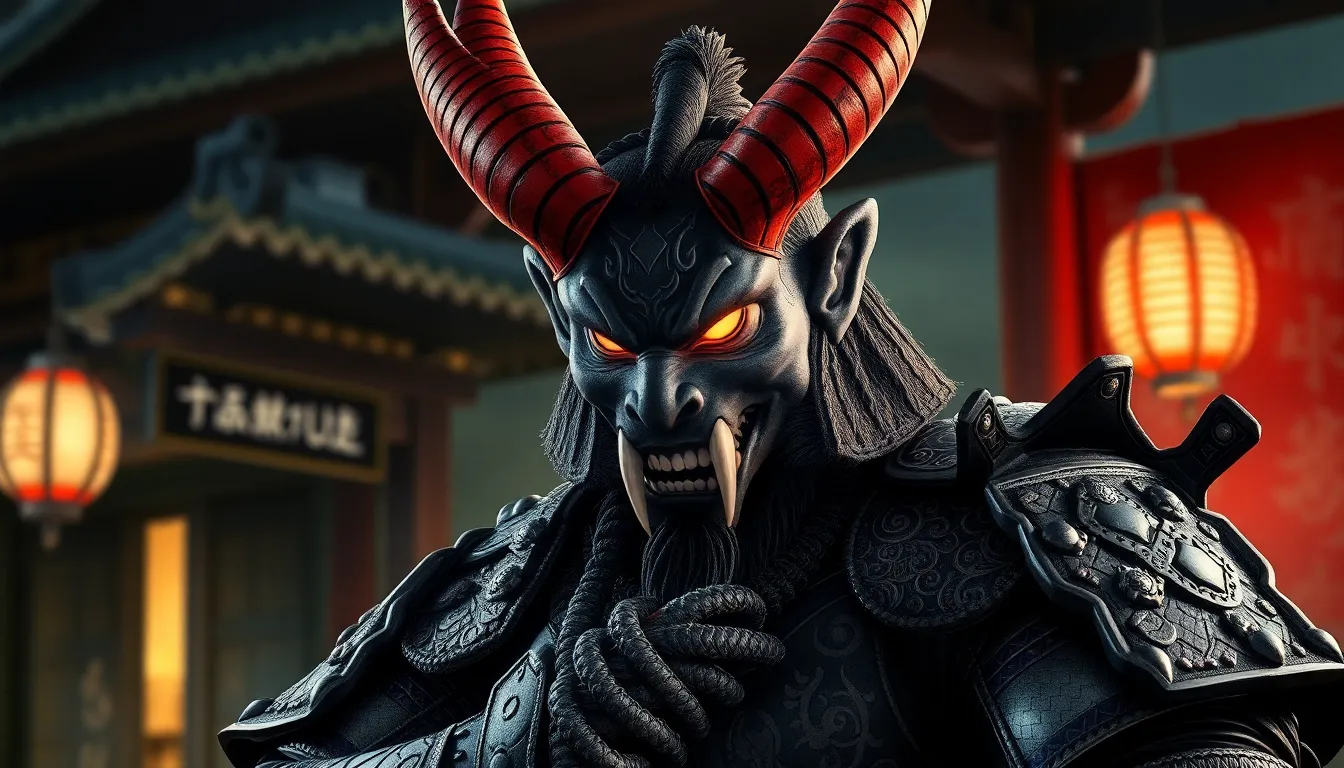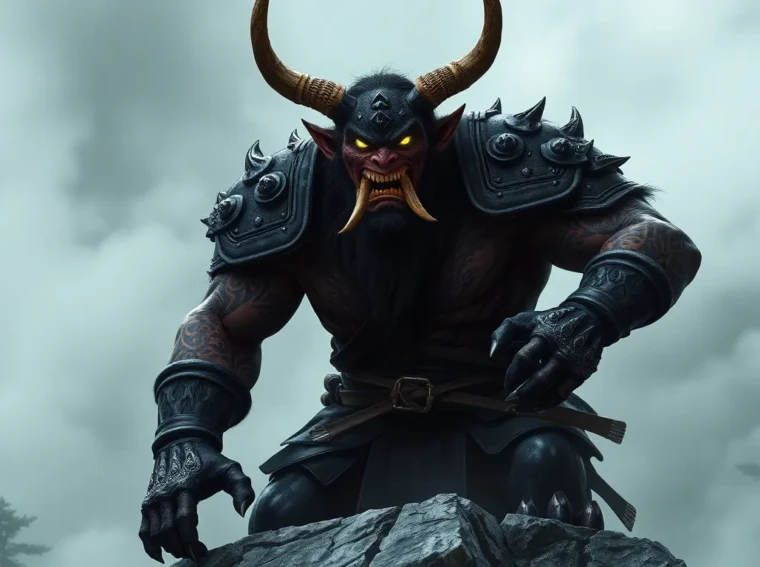In the rich tapestry of Japanese folklore, few figures are as captivating as the samurai oni. These mythical creatures blend the fierce spirit of the samurai with the supernatural elements of oni, creating a unique symbol of strength and duality. Often depicted as powerful warriors with a fearsome appearance, samurai oni embody the complexities of honor, loyalty, and the struggle between good and evil.
As tales of these formidable beings spread through centuries, they’ve become a fascinating subject for art, literature, and modern pop culture. The allure of the samurai oni lies not just in their fearsome looks but also in the stories that explore their motivations and conflicts. Delving into the world of samurai oni reveals a deeper understanding of Japan’s cultural heritage and the timeless themes that continue to resonate today.
Samurai Oni
Samurai oni embody a unique intersection of warrior ethos and supernatural folklore in Japan. These figures represent the duality of strength and mysticism, serving as both heroes and symbols of the struggle between light and darkness.
Definition of Samurai Oni
Samurai oni are mythical beings in Japanese folklore, characterized by their fearsome appearance and warrior skills. Typically depicted with horns, claws, and vibrant skin colors, these creatures combine aspects of oni, malevolent spirits, and samurai, renowned for their martial prowess. They often possess enhanced physical abilities, making them formidable opponents in battle. The fusion of samurai ideals with the oni’s supernatural traits generates rich narratives that explore themes of honor, redemption, and moral ambiguity.
Historical Context
The concept of samurai oni has roots in Japan’s rich history of folklore and the samurai tradition. Oni originated in ancient tales, representing chaotic forces or evil spirits. As samurai culture developed during the Heian period (794-1185), the portrayal of oni evolved to reflect the complexities of the samurai code, known as bushido. The samurai’s honor and loyalty provided a contrasting framework to the often malevolent nature of oni. By the Edo period (1603-1868), artists and writers began merging these archetypes, resulting in the captivating narratives that persist in literature, theater, and modern media. This historical blending illustrates not only the evolutionary path of the samurai oni but also their role in shaping cultural identity.
Characteristics of Samurai Oni

Samurai oni exhibit distinct traits that reflect their dual nature as fearsome warriors and supernatural beings. Their characteristics range from physical appearance to their cultural roles within folklore.
Physical Traits
Samurai oni typically possess exaggerated, intimidating features that convey their strength. Common traits include:
- Horns: Prominent, curved horns on the forehead signify their oni heritage.
- Fangs: Sharp, elongated fangs enhance their fearsome appearance, suggesting ferocity in battle.
- Tattoos: Intricate tattoos often depict traditional symbols, showcasing their allegiance to the samurai code.
- Armor: Elaborate, ornately designed armor blends traditional samurai elements with demonic motifs, emphasizing their warrior status.
- Eyes: Intense, glowing eyes reflect supernatural power and battle readiness.
These physical characteristics create an imposing presence, establishing the samurai oni as formidable figures within Japanese folklore.
Cultural Significance
Samurai oni symbolize the complex interplay between good and evil. Their cultural significance includes:
- Moral Ambiguity: They reflect the struggle between righteous honor and malevolent desires, embodying the challenges faced by warriors.
- Heroic Narratives: Folklore often depicts samurai oni as reluctant heroes, furthering themes of redemption and loyalty.
- Artistic Inspiration: Their unique blend of strength and supernatural attributes has influenced various art forms, contributing to the rich tapestry of Japanese culture.
- Festivals and Celebrations: The presence of samurai oni in festivals highlights their enduring relevance, bridging historical traditions with contemporary celebrations.
These cultural roles reinforce the samurai oni’s importance in understanding Japan’s historical heritage and mythology.
The Role of Samurai Oni in Folklore
Samurai oni play a significant role in Japanese folklore, embodying a blend of warrior spirit and supernatural traits. These mythical beings illustrate the intricate narrative of good versus evil while enriching Japan’s cultural history.
Myths and Legends
Myths surrounding samurai oni often depict them as tragic figures caught between duty and desire. Legends frequently show them protecting villages or punishing wrongdoers, revealing their complex morality. Stories like “The Tale of the Shōjō” narrate encounters between samurai oni and humans, where themes of loyalty and betrayal emerge. Prominent tales, such as “Kintaro” and “Tamamo-no-Mae,” highlight the duality of these creatures, showcasing their combative prowess and inherent benevolence. These rich stories often teach moral lessons, using samurai oni as vessels for exploring the consequences of one’s actions.
Modern Interpretations
Modern adaptations of samurai oni continue to thrive in various media, including films, anime, and comic books. Popular series like “Demon Slayer” showcase samurai oni as powerful, mystical warriors struggling with their inner demons. Video games, such as “Nioh” and “Sekiro: Shadows Die Twice,” integrate these figures into immersive experiences, emphasizing their complex backgrounds and abilities. Artistic renditions often reflect the fusion of traditional aesthetics with contemporary settings, keeping the samurai oni relevant to new generations. This enduring fascination reinforces the relevance of samurai oni in today’s culture, illustrating a timeless connection to Japan’s folklore.
Samurai Oni in Popular Culture
Samurai oni maintain a significant presence in various facets of popular culture, showcasing their storied legacy through literature, film, and video games. Their unique characteristics resonate deeply with audiences, contributing to their ongoing relevance.
Literature and Film
Samurai oni appear prominently in both classic and contemporary literature, often serving as central figures in narratives that explore themes of honor and moral ambiguity. Works such as “Yokai Stories” and “Japanese Ghosts and Demons” delve into their lore, portraying them as complex beings caught between good and evil. Films like “Ringu” (2002) and “Tale of the Princess Kaguya” incorporate oni elements, blending the supernatural with profound emotional depth. These portrayals shape perceptions of samurai oni, emphasizing their dual nature as both fearsome warriors and tragic figures.
Video Games
Video games increasingly integrate samurai oni, allowing players to engage with these figures in immersive experiences. Titles like “Nioh” and “Sekiro: Shadows Die Twice” feature samurai oni as formidable adversaries, highlighting their martial prowess and supernatural abilities. In “Ghost of Tsushima,” oni legends inform the narrative, grounding gameplay in cultural mythos. These games enhance understanding of samurai oni, merging traditional folklore with interactive storytelling.
Conclusion
The samurai oni stand as a powerful testament to Japan’s rich folklore and cultural heritage. Their unique blend of martial prowess and supernatural elements continues to captivate audiences both in traditional narratives and modern adaptations. As symbols of moral complexity they challenge perceptions of good and evil while embodying the warrior spirit.
Their presence in contemporary media ensures that the legacy of samurai oni remains vibrant and relevant. Through captivating stories and stunning visuals they inspire new generations to explore the depths of Japan’s mythology. Ultimately the samurai oni serve as enduring figures that bridge the past and present illuminating the intricate tapestry of Japanese culture.

